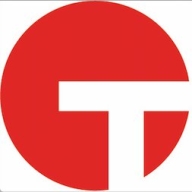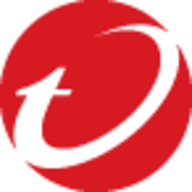

Tanium and Trend Vision One are competing products in the endpoint security and management space. Tanium has an edge in flexibility and breadth of integration, while Trend Vision One offers more comprehensive security features.
Features: Tanium is known for its real-time endpoint data aggregation, scalability, and integration capabilities. It also provides effective inventory management, patch management, and threat hunting capabilities. Trend Vision One, on the other hand, focuses on advanced threat detection, automated responses, and detailed incident analysis. Its threat intelligence, behavior analytics, and end-to-end security solution make it an appealing choice for organizations focused on cybersecurity.
Room for Improvement: Tanium could benefit from easier deployment and simplified customization processes. Its high setup costs might also be a concern for smaller operations. Trend Vision One could enhance its offering by improving integration with third-party tools and simplifying its interface for less technical users. Its initial setup process might also benefit from additional optimization.
Ease of Deployment and Customer Service: Tanium provides a flexible deployment model that supports significant customization, whereas Trend Vision One offers a streamlined cloud-based deployment with a more intuitive setup process. Trend Vision One offers proactive support services, which can be advantageous for companies seeking ease of use and fast customer service.
Pricing and ROI: Tanium usually incurs higher setup costs due to its extensive integration capabilities, but it has potential for high ROI in large-scale operations. Trend Vision One tends to be more cost-effective initially and delivers ROI through improved security efficiencies and reduced incident management costs, making it appealing for organizations where security performance is a priority.
| Product | Market Share (%) |
|---|---|
| Trend Vision One | 2.5% |
| Tanium | 2.3% |
| Other | 95.2% |


| Company Size | Count |
|---|---|
| Small Business | 4 |
| Midsize Enterprise | 3 |
| Large Enterprise | 10 |
| Company Size | Count |
|---|---|
| Small Business | 38 |
| Midsize Enterprise | 11 |
| Large Enterprise | 34 |
Tanium Endpoint Platform reduces security risk, improves agility & increases efficiency, a fundamentally new approach to endpoint security's threat detection, indicent response, vulnerability assessment and configuration compliance & with management's software distribution, asset utilization, asset inventory and patch management.
Trend Vision One offers comprehensive protection for endpoints, networks, and email with centralized visibility. It is valued for its attack surface management, real-time threat detection, integrated management, ease of deployment, and user-friendly interface.
Trend Vision One provides a sophisticated security platform combining endpoint, network, and email protection with features like virtual patching and advanced AI capabilities. Its centralized management and integration with platforms like Office 365 and Azure make it an attractive option for organizations needing streamlined workflows and efficient risk management. While it boasts robust integrations and ease of use, enhancements are needed in reporting, tool integration, and reducing false positives. Users call for better support infrastructure, faster response times, and improved threat intelligence capabilities. Despite some complexity, its AI and ML features significantly enhance threat detection and response.
What Features Define Trend Vision One?
What Benefits Should Users Look For?
Trend Vision One is implemented in industries that require endpoint protection, ransomware defense, and incident response, being flexible for both on-premises and cloud environments. It is used to monitor servers, networks, and endpoints, providing features like email protection, behavioral detection, and threat visibility. Organizations benefit from AI and ML, improving their security posture and response capabilities.
We monitor all Endpoint Detection and Response (EDR) reviews to prevent fraudulent reviews and keep review quality high. We do not post reviews by company employees or direct competitors. We validate each review for authenticity via cross-reference with LinkedIn, and personal follow-up with the reviewer when necessary.